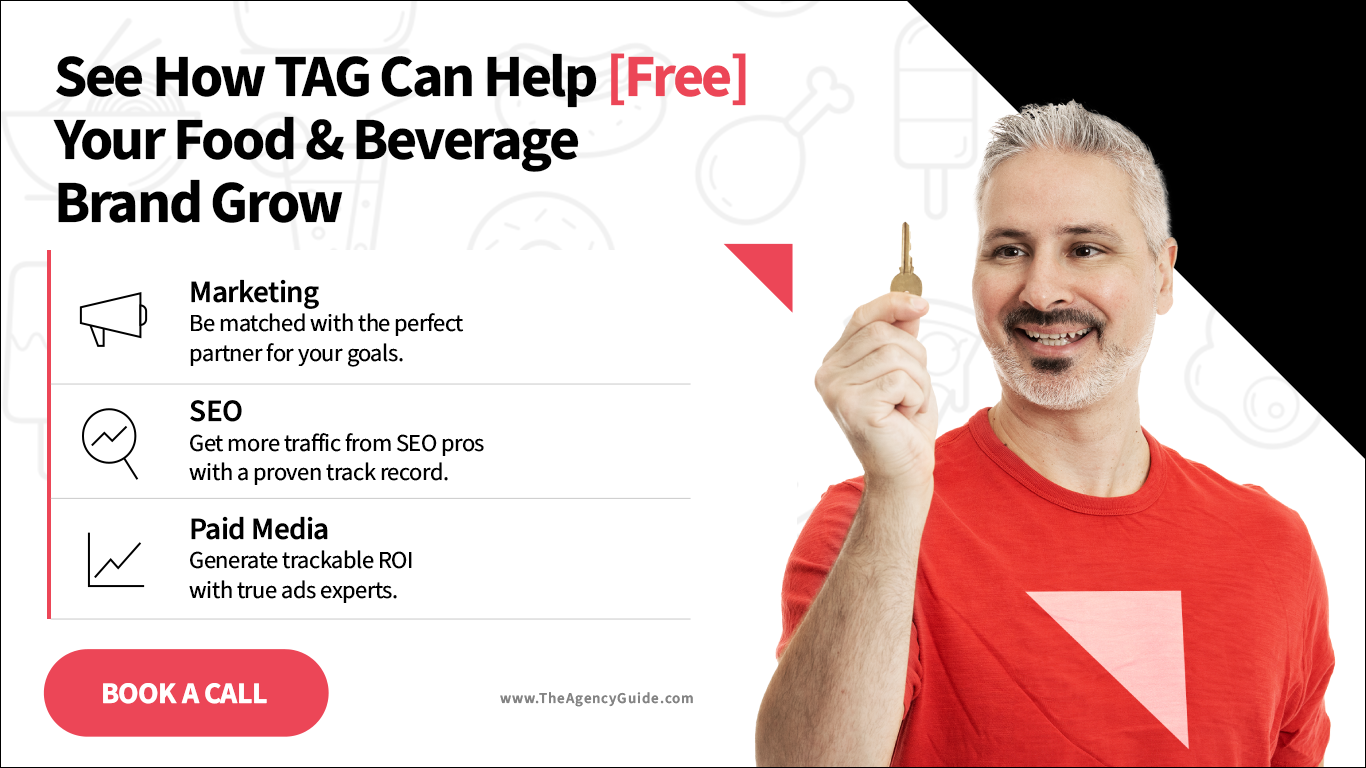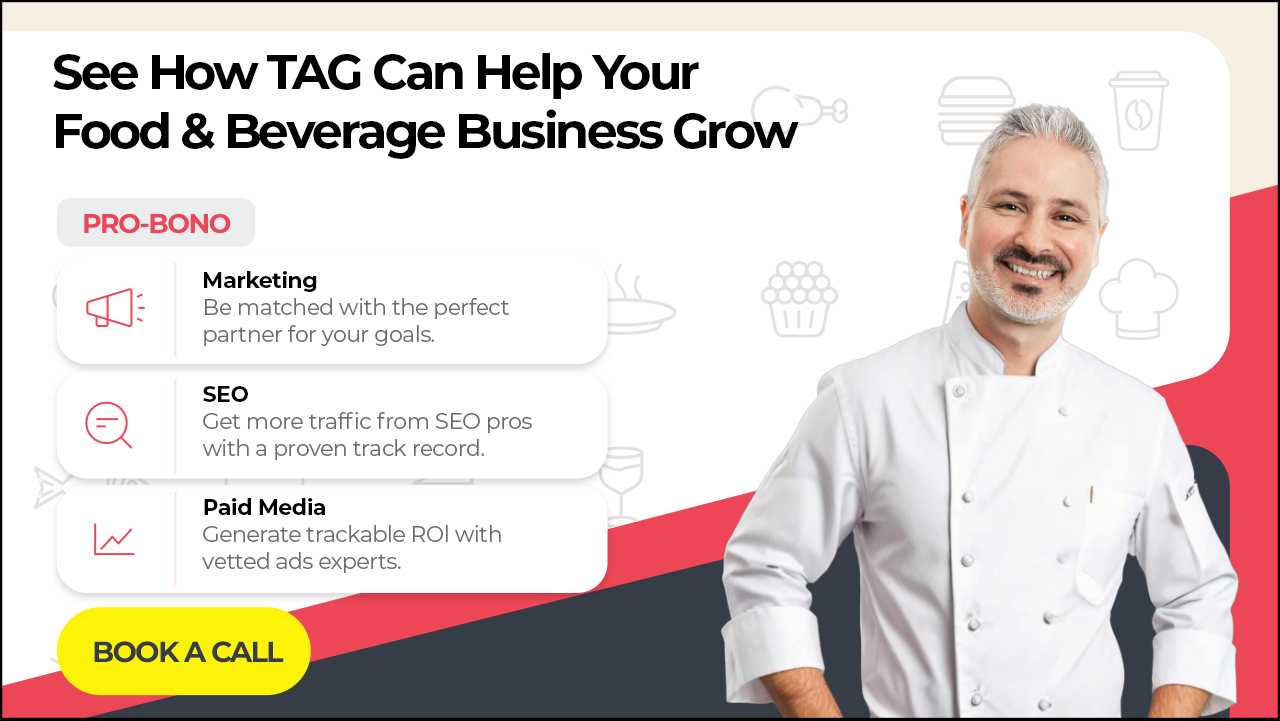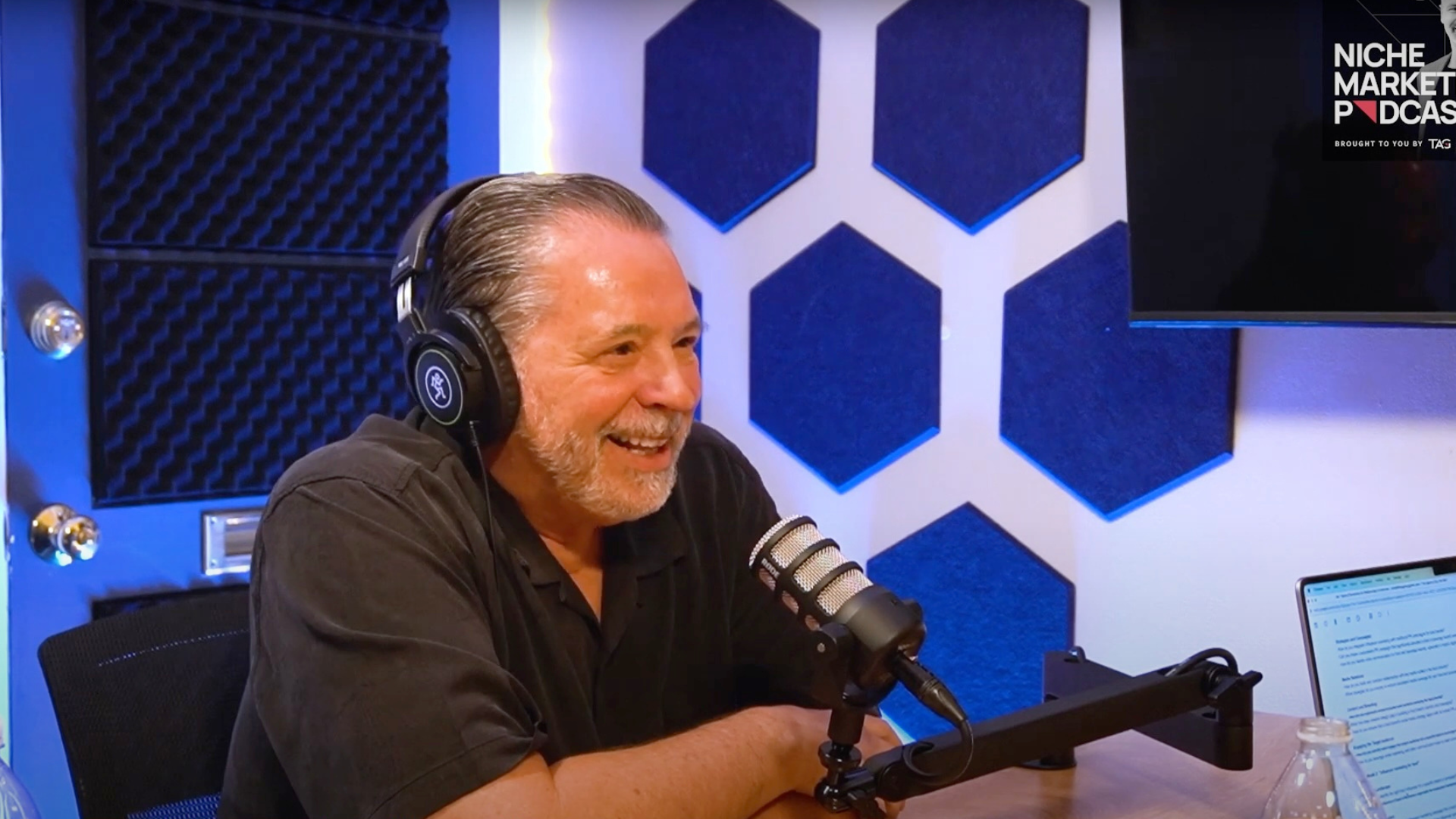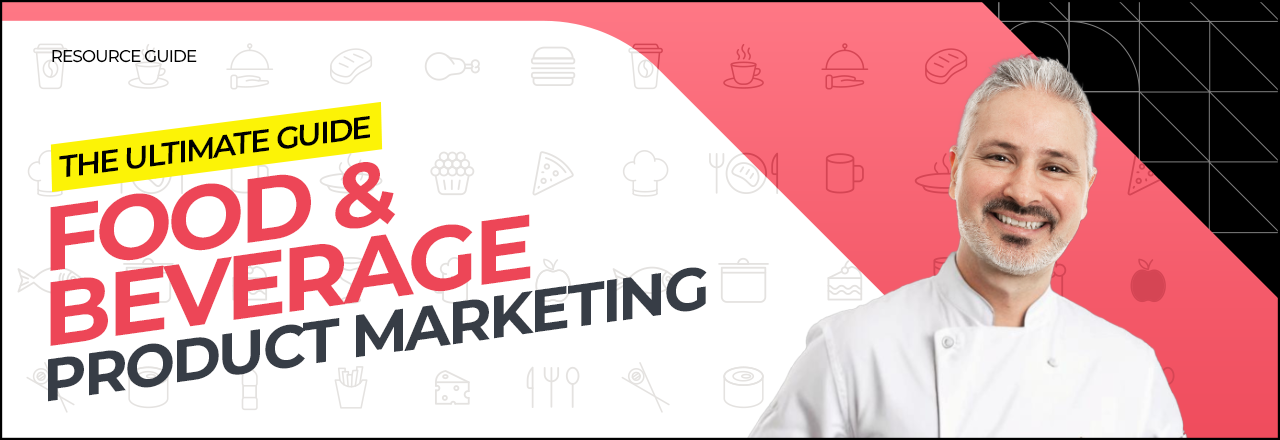
If you’re ready to launch or expand your food or beverage brand, this comprehensive guide will help you navigate every stage of food product marketing. Because we have found that success in this industry requires a multifaceted approach, this resource breaks down the essential steps into the following silos:
- Food CPG Market Research
- Food Packaging Design and Branding
- Digital Marketing Strategy for Food Brands
- Food Influencer Marketing
- Traditional Marketing for Earned Media
- Amazon and eCommerce for Food CPG
- Retail Strategy for Food and Beverage CPG
- Engaging Customers In-Person and Online
- Food Industry Insights and Trends
Whether you’re a food scientist launching a startup with innovative ingredients or an established brand adding a new product to your lineup, this guide is designed to help you succeed in the competitive food and beverage market.
How We Enhanced This Food Product Marketing Guide
As an agency search firm we leveraged our specialized expertise in connecting brands with top marketing talent to create the most comprehensive resource possible for food and beverage businesses.
To further enrich this guide, we interviewed 10 leading food product marketing professionals and integrated their actionable insights throughout.
For those who want to explore specific topics in depth, we’ve included links to their full interviews:
- Marketing to Retailers in the Food Industry with Jean-Marc Demers [Part 1]
- Expert Food Packaging Design with DePersico Creative [Part 2]
- Retail Promotion for Food and Beverage Products with Angela Rakis [Part 3]
- Leveraging Influencer Marketing and PR with Bill Southard [Part 4]
- Mastering Storytelling and Video Production with Ted Passon [Part 5]
- Scaling a Food Brand: Case Study on Tahini with Amy Zitelman [Part 6]
- Food Product Packaging Design Case Study with Jenn David [Part 7]
- Social Media Marketing for Food and Beverage with Josh Roush [Part 8]
- Amazon Marketing for Food & Beverage Products with Aalap Shah [Part 9]
Before diving into these expert interviews, let’s walk through the nine core elements you need to master to market your food or beverage product like a pro.
Our Resource Guide Promise
By the end of this guide, you'll have enough knowledge to make sound, informed decisions regarding how to market your food product.
And, if you want bespoke advice, reach out to us at TAG. We matchmake companies pro bono from our pool of vetted marketing agency partners to help you achieve all your marketing and business goals faster.
Okay, now let’s dive in!
Food CPG Market Research
Conduct Market Research and Analyze
Market research is a cornerstone of business success, so do not skip it. Understanding the current market trends and consumer preferences of your target market allows you to position your food or beverage products (and brand as a whole) effectively.
To better understand your market, use tools such as surveys, focus groups, and data analysis. Conducting market research can provide valuable insights into what consumers are looking for which will help you from product development to content marketing to brand loyalty.
When I sat down to talk with Jean-Marc Demers, CEO and Founder of Braque Agency, in Part 1 of our 9-Part podcast series, we discussed the importance of understanding your competitors and identifying gaps in the market.
Trying to fight head-to-head with a large competitor is very costly, but if you can identify a gap in the market and fill that need, now you have a solid foundation from which to grow.
Identify Your Target Audience
Once you conduct market research, the next step is to identify your target audience. Segment your market based on demographics, psychographics, and buying behaviors. Later, you will be able to create detailed consumer personas and tailor your marketing messages to resonate with those segments. Being able to communicate in a targeted way leads to building more customer affinity, loyalty, and sales.
However, remember that sometimes your "target audience," as Angela Rakis, Founder of Favorite Daughter consulting agency, and I discussed in Episode 3 of our food marketing series, is the retail buyer. You must also understand retailer goals and objectives to foster mutually beneficial partnerships so that you can earn the chance to sell your products to customers at preferred retail locations.
From our experience working with successful food brands, those who are able to get their products into retail locations can leverage in-store foot traffic to grow awareness. When no one knows about your products yet, and is therefore not coming to your ecommerce site, retail buyers can help give a big jumpstart.
We'll talk more about food distribution via physical stores later in this resource guide in Key 7.
Food Packaging Design and Branding
Find Your Unique Selling Proposition (USP)
Your food or beverage product's USP is what sets it apart from the competition. It's crucial to highlight what makes your item unique, whether that be in the ingredients, taste, health benefits, method of how it is made, and/or packaging.
As an example, if you're marketing a healthy food item, emphasize its nutritional benefits and high-quality ingredients to make it more appealing and stand out from a competitor's similar product.
Multiple guest experts in our food and beverage marketing series (including Jean-Marc Demers in Episode 1, DePersico Creative in Episode 2, and Jenn David in Episode 7) suggest creating intrigue around your products through unique product offerings and great packaging design to attract consumers.
Packaging and Branding
Whenever we help food and beverage brands source an agency for marketing, we ensure that packaging and branding is addressed in the proposal. Food packaging plays an essential role in consumer decision-making and can make or break a food product's success.
Effective packaging should:
- comply with food safety standards
- be practical for both the consumer and the retailer
- be highly visually appealing
- achieve quick brand recognition
- convey the product's benefits and brand story
- make the ideal customer feel good about purchasing
As Jenn David Connelly (Founder of Jenn David Design in Episode 7) demonstrated with case studies of before-and-after food packaging photos, balancing design and product quality inspires trials, repeat purchases, and brand loyalty.
Great food packaging design uses distinctive colors, fonts, and textures to make your product stand out on the shelves and grab the eye of your potential customer. It should also go a step further and include messages that make you feel good about your decision to put the product in your shopping cart (and mouth).
For example, if your target customer is environmentally conscious, then a box made from 100 percent recycled paper with text highlighting it as an organic food might be the key to enticing them to try your new product line. Make sure that's clear on the packaging.
DePersico Creative, in podcast Episode 2 of our food and beverage marketing series, shared a food product packaging example from a cashew nut brand. They added the words "Providing hope never tasted so good!" to the top of the packaging because the company builds orphanages in Mozambique. The back of the package also includes more about their story, mission, and brand values.
These elements pull on the heart strings and make a potential buyer more likely to purchase and share about the brand.
Pro Tip for Food Entrepreneurs:
The next time you are shopping in a grocery store, bring the packaging from your product and then pick up a similar product to examine the packaging and compare side by side. Look closely at food labels and ingredients, then think like your target customer and take note of elements you would want to incorporate into your design and elements you could greatly improve upon with a few small tweaks.
Digital Marketing Strategy for Food Brands
Social Media Marketing
In today’s digital age, leveraging online channels is essential. Social media marketing is not just a trend. To be relevant, you should utilize social media platforms like Facebook, Instagram, TikTok, Pinterest, YouTube, Snapchat, Twitter, LinkedIn, and others to engage with your audience and create a community around your food business and brand.
And because food is highly visual, these platforms can be even more effective when used well. Although food is perceived as a commodity, your food brand can differentiate itself through lifestyle, emotional resonance, and tribe building. Social media platforms allow you to connect with your customers directly and separate yourself from the pack.
As Ted Passon (co-owner of All Ages Productions and an award-winning director, writer, producer, and video artist) and I discussed visual storytelling and video production for brands, we reiterated that you must connect on an emotional level with your potential customer, especially when selling something so vital and experiential as food.
"If you don't make people feel emotion…well, it just blends in with the noise."
-- John Bertino
This idea is closely tied to what I discussed with Josh Roush, the CEO of Movetic, who emphasized the concept of "ethos" in branding and content creation. Understanding the deeper values and beliefs of your target audience—what they truly stand for—can help you create authentic, culturally relevant content.
For example, the brand Celsius embraced the ethos of "live fit" and transcended the traditional view of fitness as merely a core activity. Instead, they positioned it as a broader lifestyle aspiration, which resonated deeply with a diverse audience by aligning with their values and lifestyle choices.
Similarly, when marketing your food product, it's not just about showcasing the food itself but connecting with your audience's core values. By understanding and aligning with their ethos, your brand can build meaningful connections that go beyond the surface, making your content stand out in a crowded digital landscape.
Email Marketing and SMS Marketing
Email marketing and SMS marketing can be used to send promotional offers, recipes, and brand stories to keep subscribers engaged. Unlike social media platforms, the emails you collect are an "owned asset" with more control over when and how you communicate.
Marketing via email and SMS is more direct and cannot be shut off at the whim of a social media platform's algorithm change. Plus, those customers willing to opt-in are showing a higher level of brand loyalty–respect that by adding value and giving them a reason for repeat purchases.
Search Engine Optimization (SEO)
SEO is another critical component of being found online, since over 90% of people do not look past the first page of search results (and, according to Backlinko, "only 0.63% of Google searchers clicked on something from the second page.") If your brand is not visible on page one, you're losing potential revenue.
Follow the best practices outlined in Link Building for Local SEO ensure each product appears in relevant online searches above your competitors' similar product.
Food Influencer Marketing
Working with Influencers
Content creators on Instagram, a food blogger who shares recipes on YouTube shorts, and specialty chefs with well-loved Pinterest and TikTok accounts can be influential in spreading the word about your product.
Spend time to see which social media platforms your audience engages with most, what formats of content they love best, and which relevant influencers are building true community around themselves. Look at the engagement levels on the recent posts of micro-influencers and influencers with bigger followings to see what resonates with their audiences and if they would be a fit for your food brand and products.
From there, it's a matter of reaching out to influencers and negotiating terms.
When a collaboration is in alignment, working with food or beverage influencers can help you create tribe, discover nuances in consumer preference, build customer loyalty, and pull more like-minded people into your community (on top of generating more sales, of course!).
As a great real-life example, our expert guest Amy Zitelman of Soom Foods shared how early on in her brand's growth, she connected with Chef Mike Solomonov and his business partner, Steve Cook, who run the popular Israeli restaurant Zahav in Philadelphia. She approached the chefs with the idea of introducing better quality tahini to the American market, and when asked about the tahini they were using, Chef Mike couldn't name the brand and admitted it was of poor quality.
This led to a partnership where the chefs helped Soom Foods sell its high-quality tahini to restaurants. By targeting chefs and restaurants, Amy discovered the significant volume potential in wholesale, as restaurants use much more tahini than individual consumers. Additionally, the chefs' influence helped build brand credibility and reduced the need for consumer education. This collaboration became a key factor in Soom's business strategy.
In my discussion of influencers in marketing with Josh Roush, CEO of Movetic, in Part 7 of my 9-Part series, we dove deep into how culture and counterculture can define brands and be a beacon to attract the right collaborators.
Earned Influencers vs. Paid Influencers
Influencer marketing involves working with earned influencers and paid influencers.
On the earned side, people with a following or social influence share organically about your products, which can be instrumental in driving demand for a new food product, building brand awareness, enhancing brand positioning, and more through organic content marketing efforts. Although this organic form of influencer marketing shares can lead to increased sales, you don't get to control what they say in their review or social content, when they post, or on which social media platform they share.
Paid influencers, on the other hand, are those who require compensation in exchange for sharing about your products. They tend to follow directions more closely, and your brand can have some control over or input on messaging and timing of the shared content or overall content marketing strategy.
To learn more about earned influencers, paid influencers, and how to work with micro influencers, make sure to check out our conversation with Bill Southard of Southard Communications.
Traditional Marketing for Earned Media
Whenever a product is seen as a commodity, and thus hard for consumers to differentiate from other available options, earned media is critical. Earned media affords you "social proof" from trusted publications or influencers that serves to validate that your offering is better or superior to other options available.
In crowded spaces like food and beverage, this is incredibly important. Note also that such "social proof" can be repurposed across all brand touch points indefinitely to increase conversion rates.
Public Relations (PR)
In working with food and beverage brands, we have found that traditional media can support and enhance your digital marketing strategy. PPR efforts should include press releases, media kits, and targeted pitches to journalists who cover the food industry and looking for news that coincides with a market trend.
By building relationships within the traditional media world, your new food brand can gain exposure and legitimacy with endorsements or features by legacy media outlets just as Amy Zitelman experienced when Mike Solomanov in a Wall Street Journal article mentioned Soom Tahini and they immediately got 60 new orders on their website.
Amy went on to say, “To be able to cultivate the relationships to traditional media…has been very obviously beneficial to the revenue and the brand,” in our episode on scaling a food brand.
Local and Morning News Coverage
PR initiatives, networking, and even an effective publicist can help you garner media coverage and solidify brand positioning. Every news outlet is looking for compelling stories, so if you can craft authentic and engaging story angles and pitch them succinctly, even a low budget marketing campaign can attract big media attention.
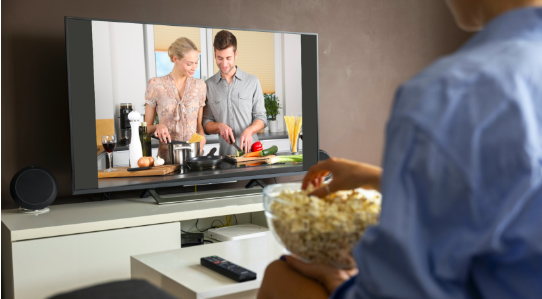
Traditional Media Marketing Tips
There are fewer mainstream publications these days, so producers, guest bookers, and reporters are busier than ever. If you bring them a great story that doesn’t feel like a commercial, they may actually WANT to run it.
Just remember that a media pitch needs to be newsworthy, timely, and relevant.
If your pitch is too commercial, outlets may agree to share it but only as a paid integration. This can get pricey.
So, do research on everyone involved via Twitter, LinkedIn, and websites to identify reporters, media, and producers who actually care about types of products or category of items you offer. Then, reach out to them with an interesting story ready to be shared that’s of interest to their audience. You’ll be surprised how much traditional press you can generate.
Another angle that most new food entrepreneurs may not consider is the importance of trade shows (which we talk about even more in Key 8). I discussed with Bill Southard how events such as the Fancy Food Show and Natural Products Expo provide crucial opportunities to establish relationships with distributors, retailers, and media. For new brands, getting featured in industry trade publications distributed at these shows is vital for visibility, especially with potential buyers like those from large retailers.
Additionally, trade shows offer a unique advantage in connecting with media and influencers who are already present, making it easier to introduce new products and secure coverage compared to standalone press events.
To learn more, see what Bill Southard of Southard Communications shares about leveraging traditional media for food and beverage marketing.
Amazon and eCommerce for Food CPG
Amazon Marketing and Fulfillment
If you aren't selling direct-to-customer (DTC) from your own e-commerce website–built using Shopify or WooCommerce as two examples–Amazon can be a powerful platform for selling your food products. Plus, you can take learnings from Amazon and apply them to your DTC store.
Aalap Shah (the Founder & CEO at 1o8® who focuses on driving growth for CPG brands with data driven insights) and I talked in Episode 9 about the importance of a few Amazon seller best practices for food products, including:
- Optimize Amazon listings with SEO (including the title, category, keywords, and the product description including bullet points for easy reading and focusing on the product benefits)
- Use pay-per-click (PPC) strategies to increase visibility and sales (Google Ads, Amazon Ads, Facebook Ads)
- Set up your Brand Registry to protect your brand and enhance advertising effectiveness
- Leverage analytics tools to better understand consumer behavior and optimize your marketing campaigns
- Use Amazon's A+ content to improve product listings
- Be more transparent with food labels and ingredients
- Use gorgeous, high-quality imagery and videos
- Get as many real reviews as you can (there are tools like FeedbackWhiz to help prompt reviewing – but stay away from black hat or gray hat behaviors to avoid getting banned)
- Keep your inventory in stock
Visual Elements Are So Important
To break down advice on visuals that support your listing even further, here is an overview of what you should aim to share for your food product listings?
1. Detailed Product Images (2-3 images):
- Show clear, high-resolution images of your product from multiple angles.
- Consider including 3D or Augmented Reality (AR) elements to enhance the viewing experience.
2. Lifestyle Images (2-3 images):
- Display how the product is used in real-life scenarios.
- Show the product in different settings or for different uses to help customers visualize themselves using it.
3. Founder Story Video:
- If applicable, create a video featuring the founder, explaining the story behind the brand, why the product was created, and what went into product development.
4. Product Demonstration Video:
- Showcase the product in action, highlighting its features and providing a 360-degree view with some motion to give customers a better understanding of the product.
These images and videos will help engage customers, keep them on your Amazon product page longer, and ultimately drive more sales.
To learn more, watch the full interview with Aalap Shah here: Amazon marketing for CPG products.
Analytics and Metrics
To make data-driven decisions, make sure to track your marketing and sales performance both of organic content and paid ads. We recommend that you regularly monitor key metrics such as sales velocity, customer engagement, and ad performance. Then adjust your strategies based on insights to help optimize your food marketing efforts and achieve better results.
Use tools like Google Analytics, Amazon Ads, and social media platform insights to get a comprehensive view of what's working to drive reach, engagement, product views, add to carts, and purchases. If you stay on top of metrics, you can also look out for new keywords or trends you could capitalize on.
Retail Strategy for Food and Beverage CPG
Stock Your Products onto Shelves
Breaking into a grocery store or retail chain requires a strategic approach because it can be a challenge to convince a retail buyer to stock your new food product before you have created a strong brand identity and consumer demand, yet very advantageous for the growth of your food brand. Plus, you have to pay slotting fees and spend money on marketing, if you do get the chance, so you want to make sure you are fully ready to take advantage of any opportunity you get.
This brings us back again to packaging and visual appeal; both are crucial in capturing retailers' attention. Effective packaging and compelling brand stories help market to the retail buyer and persuade them to stock your products on store shelves. If you have struggled to get a buyer to say 'yes,' what retail buyers will never tell you is: you have an ugly baby. Stores want their shelves to look good, and if your packaging isn't visually appealing, you'll hit a stone wall.
Drive Traffic and Attention to Your Products
Once your product does make it onto shelves, localized advertising and targeted marketing (like running Facebook and Instagram ads to only those who live in zip codes close to the store) can increase brand recognition in and customer traffic to specific retail locations. If a grocery store sees increased demand, it will be more likely to re-stock your product and give it better visibility, perhaps even on an end cap.
In your efforts, make sure your marketing materials, point-of-sale displays, brochures, and other brand collateral complement your packaging to create a cohesive brand experience for your potential customer.
Lastly, consider working with food brokers who can assist in negotiating shelf space and managing relationships with grocery stores. To drive enough sales to keep the retailers stocking your products, see Key 8 for tactics that work!
Leverage Your Local Farmers Market and Local Vendors
Direct-to-consumer sales at a farmers' market and through local vendors can build community engagement and brand loyalty for your food brand. Unlike digital communication, these channels allow for personal interaction with customers and immediate feedback face-to-face and can be one of the only options a startup may have to get some brand awareness at a local level without utilizing more expensive marketing techniques.
Amy Zitelman, CEO and Cofounder of Soom Foods and author of The Tahini Table, from Episode 6 shared how her small business leveraged grassroots efforts and building of relationships with local vendors, cuisine-specific restaurants, and trusted chefs to establish a loyal customer base. She scaled her tahini brand doing this exceptionally well.
Selling at a farmers' market or a local food festival gives you real-time market research, the opportunity to test new products, and a chance to gather consumer feedback. This is especially important for those with a small business, a food startup, or new food product offering without an established brand in the target market.
Engaging Customers In-Person and Online
“Shopper Marketing”
The term “shopper marketing” boils down to the in-store experience and that feeling you get when you walk in the store. A high-end supermarket has a different feel than a warehouse store like Costco, yet both are popular options for shoppers. Keep in-store experience in mind along with your target market’s preferences when planning promotional strategies.
Promotional Strategies and Food Sampling
Effective strategies to promote your food or beverage products include fun events, food sampling, discounts, and contests.
As we discussed earlier, engaging with shoppers in person is an effective way to encourage them to taste a new product and make their first purchase.
But sampling is so important that it not only came up multiple times in our 9-part marketing series, we thought it prudent to focus on it again here.
Angela Rakis, the savvy business strategist from Favorite Daughter LLC, aptly declared a motto for all food marketers serious about retail promotion to use as a battle cry:
“I gotta get the food into the people.”
To take it up a notch, if you are willing to host founder-led active demos during your in-store samplings, you will see the product clear off the shelves since no one knows the brand story and has the passion like the founder.
These in-person events are especially important for new products at retail because you need to make a splash to drive enough sales to sell out. If your product sells through, retail buyers will be motivated to stock your products, thus leading to larger distribution. Increased distribution leads to bigger brand awareness. Bigger brand awareness leads to more e-commerce searches. More ecomm searches lead to more direct sales online, better margins, and also more interest from other retailers.
Then it snowballs from there. The foodie “flywheel” is in motion.
To make your efforts even more effective, make sure to start these types of in-person sampling events in “mover markets,” which are places with groups of people who are early adopters for products like yours. For example, California and Seattle have great pockets with mover markets for natural food items. Hit a groundswell of people in the mover markets, leverage local earned media, and it can spread across the rest of the country as people share about your products with others they know.
Building Target Customer Loyalty
Retaining customers is as important as acquiring new ones. Techniques such as loyalty programs, personalized offers, and exceptional customer service can help build a loyal customer base. In consulting successful food brands, we’ve found that running targeted advertising campaigns to drive repeat purchases and utilization of loyalty programs to produce measurable return on investment. You could also consider collaborations with local artists or influencers to enhance your brand’s aesthetic and reach.
Then, as we discussed above in Key 3, leverage SMS text message and email marketing to send relevant promotional offers and engaging content to subscribers. Offer special deals during holidays or local events to drive sales, increase brand visibility, and deepen brand affinity.
To make your communication even more engaging, make sure to lean into authentic storytelling and eye-catching visuals, videos, and copy.
Food Industry Insights and Trends
Stay Ahead of Food Trends
Keeping up with food trends is essential for staying relevant in the market. For example, consumers increasingly prioritize healthy food choices (and they do read food labels closely!), sustainable practices, convenience, and unique flavors.
Monitor trends in the food industry to help adapt your products and marketing strategies to stay relevant. For instance, the rise of plant-based diets presents opportunities for innovation and differentiation. Bringing in a food scientist or professional chef could help you develop new food items that meet evolving consumer demands such as dairy free or gluten free.
To illustrate, Amy Zitelman (CEO and Cofounder of Soom Foods and author of The Tahini Table) shared how Nutella is a delicious and in-demand product but its first two ingredients are sugar and vegetable oil–both very unhealthy for you. To compete with the huge food brand, Soom Foods is developing a tahini-based alternative to Nutella that has only three ingredients, half the sugar, and is far healthier.
Network at Food and Beverage Industry Events
Attending industry events such as food shows, trade fairs, expos, and conferences can provide valuable networking opportunities and insights into market trends. These events allow you to showcase your products, connect with potential buyers, and learn from industry experts.
We recommend thorough preparation to take advantage of your time at events–don't just wing it. Research who else will be attending, build relationships with other food manufacturers and vendors, and be open to collaborations and new business opportunities.
If your budget allows, purchase a booth and really showcase your products. But even if you are an emerging food brand without a huge marketing budget, you can "go as an attendee and walk around and see what other trends you're seeing. And if you can, book meetings there because that's where buyers are literally keeping their eyes open," as Angela Rakis (the Founder of Favorite Daughter) advised in our conversation on retail promotion for food and beverage products.
Wrapping It Up
Effectively marketing a consumable product requires a comprehensive approach. In this detailed guide, we looked at the following 9 elements:
1: Know the Market of Your Food Business Inside and Out
2: Create Eye-Catching Packaging and Branding
3: Plan Your Digital Marketing Strategy
4: Collaborate with Food Influencers
5: Leverage Traditional Marketing
6: Sell Products on Amazon or Other eCommerce Platforms
7: Get Your Food and Beverage Products Selling in Retail Stores
8: Further Engage Customers In-Person and Online
9: Leverage Insights and Trends
By following the insights and strategies outlined in this guide, food and beverage brands can achieve marketing success and establish themselves as leaders in the industry. Whether you are a small business, budding startup with just one new product, or established brand, I hope this guide on how to market a food product provides you with an actionable roadmap.
For more in-depth insights and expertise, watch Season 4 of the Niche Marketing Podcast on YouTube, where food marketing experts share their experiences and strategies for how to market a food product with great success.
Here are each of the nine interviews broken out again:
- Marketing to Retailers in the Food Industry with Jean-Marc Demers [Part 1]
- Expert Food Packaging Design with DePersico Creative [Part 2]
- Retail Promotion for Food and Beverage Products with Angela Rakis [Part 3]
- Leveraging Influencer Marketing and PR with Bill Southard [Part 4]
- Mastering Storytelling and Video Production with Ted Passon [Part 5]
- Scaling a Food Brand: Case Study on Tahini with Amy Zitelman [Part 6]
- Food Product Packaging Design Case Study with Jenn David [Part 7]
- Social Media Marketing for Food and Beverage with Josh Roush [Part 8]
- Amazon Marketing for Food & Beverage Products with Aalap Shah [Part 9]
Want Personalized Help to Grow Your Food or Beverage Brand?
And, for a free consultation on how your brand should move forward to scale, reach out. I'd love to learn more about your business and goals and help match you with the best partner for your brand.
SCHEDULE A FOOD MARKETING CONSULTATION






